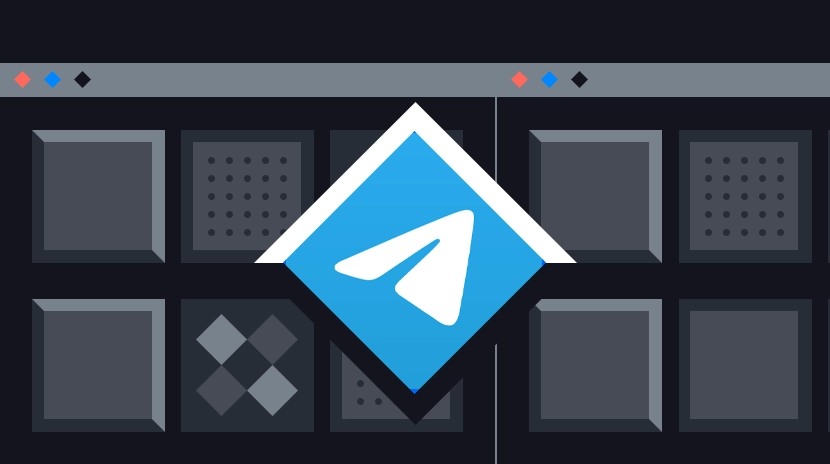ما هو الصفر المزدوج؟
مقدمة
تتطور تكنولوجيا البلوكشين بسرعة كبيرة، ولكن اعتمادها على البنية التحتية للإنترنت التقليدية يسبب ضعفا في الأداء. نظرًا لطبيعتها اللامركزية، تعتمد شبكات البلوكشين، خاصة الشبكات الطبقية 1، على المحققين للتحقق من المعاملات وآليات التوافق. ومع ذلك، يجب على هؤلاء المدققين التواصل من خلال قفزات الشبكة العامة، مما ينطوي على مزودي خدمة الإنترنت (ISPs)، وشبكات توزيع المحتوى (CDNs)، ومراكز البيانات المركزية (CDCs). تقدم هذه الهيكلية في التواصل قيودًا كبيرة على عرض النطاق الترددي وتأخير غير متوقع بين عقدة المدقق، مما يشكل القيد الأساسي لأداء سلسلة الكتل.
شبكات الطبقة 2، المُبنية خصيصًا لتوفير قابلية التوسع، توفر الإغاثة الجزئية من خلال معالجة المعاملات خارج السلسلة، ولكن في النهاية تعتمد على البنية التحتية للطبقة 1 للتسوية النهائية. التحديات الأساسية في التواصل تستمر عبر كلتا الطبقتين بغض النظر عن القدرة الحسابية.
يواجه دوبل زيرو هذه الفجوة البنية من خلال تطوير هندسة شبكة تتجاوز هذه الحواجز في الاتصال، مما يمهد الطريق لكون سلاسل كتلية عالية الأداء أكثر كفاءة وقابلة للتوسع.
ما هو DoubleZero؟
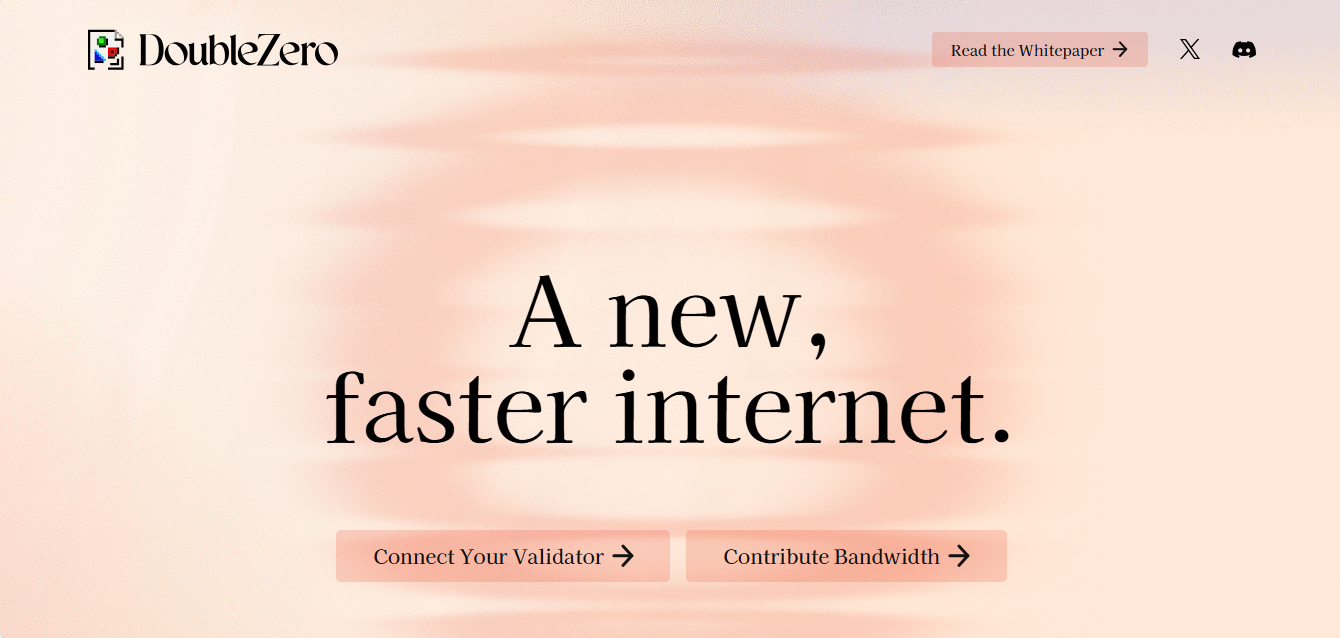
المصدر: DoubleZero
يعد DoubleZero بروتوكول إنترنت لامركزي مصمم لتسريع التوافق في سلسلة الكتل من خلال إنشاء مسارات محسنة تمكن المحققين من تبادل البيانات مع تأخير أدنى وإنتاجية قصوى. يقدم نهجًا جديدًا لشبكات سلسلة الكتل، مع إعادة تعريف كيفية تفاعل المحققين وتبادل البيانات.
على عكس الهياكل السلسلة الكتلية التقليدية التي تعتمد على الإنترنت العام الحالي، ينشئ النظام الثنائي الصفر إندماجًا ممكنًا، وبنية تحتية للشبكة عالية الأداء تستفيد من اتصالات الألياف غير المستخدمة بشكل كامل، وتشكل شبكة شبكية متزامنة تقلل من عدم الكفاءة الكامنة في أنظمة التوجيه التقليدية، مما يضمن نقل البيانات بسلاسة ومتانة.
يعيد إطار عمل DoubleZero بشكل أساسي تصور كيفية تواصل مدققي blockchain من خلال إنشاء نوع جديد من بنية الشبكة. توصف بأنها أول بنية تحتية "N1" في العالم ، وهي بمثابة طبقة أساسية محايدة يمكن بناء تقنيات الشبكات الأخرى عليها. كما أنه يسرع إجماع blockchain مع الحفاظ على اللامركزية. تدعم البنية الفريدة للبروتوكول التحقق من صحة blockchain عالي السرعة ، وتعزز الأمان من خلال تقنية الترشيح القائمة على FPGA ، وتحسن عرض النطاق الترددي لمنع الازدحام.
يتم تصميم DoubleZero بدون إذن. يمكن للمساهمين المستقلين توفير اتصالات الألياف الخاصة غير المستخدمة لتشكيل شبكة تواصل متزامنة. يعمل هذا الإعداد على تعزيز عرض النطاق الترددي للشبكة وتقليل التأخير، مما يخلق طبقة شبكة متينة منفصلة عن أنظمة توجيه الإنترنت التقليدية.
فريق DoubleZero
Austin Federa
أوستن فيدرا هو شريك مؤسس في دبل زيرو وكان مدير استراتيجية واتصالات سابقًا في مؤسسة سولانا. بعد عدة سنوات في سولانا، ابتعد أوستن عن منصبه للتركيز على بناء دبل زيرو. خبرته في تطوير النظام البيئي قد ساعدت في تشكيل رؤية دبل زيرو.
Andrew McConnell
أندرو ماكونيل هو شريك مؤسس ومدير التكنولوجيا الرئيسي (CTO) في DoubleZero، حيث يشرف على البنية التحتية التقنية. كما شارك في تأسيس Malbec Labs ويشغل منصب CTO الحالي فيها.
ديفيد ماكنتاير
ديفيد ماكنتاير هو رئيس ضباط التشغيل (COO) في DoubleZero. سبق له قيادة تخطيط وتحليل الماليات (FP&A) في مؤسسة سولانا وعمل في استراتيجية المبيعات والعمليات في بريكس وسكوير.
نيهار شاه
نيهار شاه هو رئيس السابق لعلم البيانات في مختبرات ميستن. انضم إلى دبل زيرو بوصفه خبير اقتصادي رئيسي. تتضمن خبرته أدوارًا في جمب كربتو ومشروع ليبرا/ديم التابع لـ ميتا.
الميزات الرئيسية لـ DoubleZero
الهندسة المعمارية لشبكة عالية الأداء
يوفر DoubleZero أداء استثنائيًا من خلال بنية متعددة الطبقات تدير بكفاءة تدفق البيانات وتقلل من التأخير وتمنع الازدحام عبر الأنظمة الموزعة. يربط بين الأشخاص المعتمدين ومشاركي الشبكة من خلال نقاط تبادل DoubleZero (DZXs)، مما يمكن من الاتصال الفعال بين مراكز البيانات داخل المناطق الحضرية.
يسهل نقاط تبادل الحلقة الداخلية التواصل العالمي بغض النظر عن أعداد المساهمين، مما يخلق شبكة متماسكة تتجاوز قدرات البنية التحتية للإنترنت التقليدية.
تقنية الترشيح بتسريع الأجهزة العتادية
ينتشر DoubleZero أجهزة البوابات المبرمجة الميدانية المتخصصة (FPGAs) على حواف الشبكة لأداء تصفية المعاملات، والتحقق من التوقيع، والقضاء على الرسائل المزعجة قبل وصول البيانات إلى المحققين.
أجهزة FPGA يمكن أن تعالج عدة غيغابت في البيانات الواردة، مما يزيل المعاملات المتكررة وحركة المرور الخبيثة. يقلل هذا العملية التصفية بشكل كبير من العبء الحسابي على المدققين، مما يتيح لهم التركيز على مهام التوافق وإنتاج الكتل.
تحسين عرض النطاق الترددي وانتشار البيانات
يعزز DoubleZero عمليات البلوكشين من خلال مسارات نقل البيانات المحسنة. تربط روابط الألياف عالية النطاق والمنخفضة التأخير نقاط مختلفة على نطاق عالمي، مما يسمح بانتشار الكتل بشكل أسرع ويقلل من مخاطر الكتل اليتامى.
تستفيد الشبكة من طاقة احتياطية كبيرة في سوق الألياف العالمي، بما في ذلك "الألياف السوداء" غير المستخدمة والقدرة الفائضة للشركات. يوفر مساهمو الشبكة هذه الاتصالات مع اتفاقيات خدمة ملتزمة، مما يضمن لجميع المشاركين الوصول في الوقت الحقيقي إلى أحدث حالة للبلوكشين مع حد أدنى من مشاكل التزامن.
شبكة ألياف عالمية بدون إذن
يعمل DoubleZero على نموذج حقاً غير مرخص له حيث يمكن لأي شخص أن يساهم بروابط ألياف وموارد الاتصال لتوسيع نطاق الشبكة. يحول النظام القدرة الزائدة على استخدام الألياف - التي وفقًا لـ DoubleZero، يُقدر حجمها بنسبة 65% في الولايات المتحدة وحدها - إلى طبقة بنية تحتية عالمية قيمة. يوفر مساهمو الشبكة روابط ألياف مملوكة أو مؤجرة مع اتفاقيات مستوى الخدمة المحددة التي تحدد النطاق الترددي والتأخير ومواصفات وحدة الإرسال القصوى (MTU).
الحوافز الاقتصادية للمشاركة في الشبكة
يتلقى المشاركون في نظام DoubleZero مكافآت بناءً على مساهماتهم في استقرار الشبكة وكفاءتها. ينفذ هيكل التحفيز مبادئ الاقتصاد الرقمي لضمان التعاون بدلاً من الخيانة. الروابط التي تلبي اتفاقيات مستوى الخدمة الخاصة بهم تكسب المكافآت، بينما تواجه الاتصالات الأدنى عقوبات واستبعاد محتمل. يتماشى هذا النموذج الاقتصادي مع احتياجات الشبكة، مشجعًا المشغلين على الحفاظ على خدمات عالية الجودة مع مرور الوقت.
كيف يعمل DoubleZero؟
يقدم DoubleZero تصميمًا جديدًا لبلوكشين يعيد تعريف هياكل الشبكة التقليدية. تتطلب شبكات البلوكشين التقليدية من كل محقق التحقق من جميع جوانب معالجة البيانات بشكل مستقل - من استيعاب المعاملات الخام إلى إنهاء الكتل.
يقوم دبل زيرو بفصل عمليات التصفية والتحقق عن تضمين المعاملات وإنتاج الكتل والتنفيذ. يؤدي هذا الفصل إلى إنشاء تدفق معاملات متوازٍ ومحمي يحسن بشكل كبير من أداء الشبكة.
هندسة النظام
تم تصميم هندسة DoubleZero بشكل يتكون من حلقتين متمركزتين متميزتين. يعملان معًا لإنشاء شبكة قابلة للتوسعة وغير المرخصة ومتينة للمعاملات بالبلوكشين وتطبيقات التوزيع الأخرى.

رسم تخطيطي لشبكة DoubleZero Conceptual (المصدر: DoubleZero)
طبقة الوصول / الخروج: تصفية وتحقق
يعمل طبقة Ingress/Egress كبوابة لـ DoubleZero، حيث تقوم بتصفية المعاملات الواردة قبل وصولها إلى عقد الاتفاق. يقوم الأجهزة المتخصصة، مثل البوابات القابلة للبرمجة الميدانية (FPGAs)، بتخفيف هجمات إنكار الخدمة (DoS)، والتحقق من التواقيع التشفيرية، والقضاء على المعاملات الزائدة. مع إدارة هذه المهام خارجيًا، يمكن للمحققين التركيز على إنتاج الكتل وتنفيذ المعاملات دون عبء إضافي من منع الرسائل غير المرغوب فيها.
يقوم المساهمون في الشبكة بنشر هذه الأجهزة في نقاط استراتيجية عبر نقاط تبادل DoubleZero (DZXs)، التي تعمل بشكل مماثل لنقاط تبادل الإنترنت (IXPs) ولكنها محسنة لحركة البلوكشين. تتيح هذه النقاط توفير توصيل فعال بين عدة مراكز بيانات داخل المناطق الحضرية.
يسمح طبقة Ingress للمساهمين المستقلين بتوفير عرض النطاق الترددي والموارد الحسابية، مع الحوافز من خلال اتفاقيات مستوى الخدمة (SLAs) التي تفرضها العقود الذكية. كما أنها الطبقة الخارجية التي تربط DoubleZero بالإنترنت العامة، وتتعامل مع تصفية البيانات والأمان وتحسين حركة المرور قبل وصول البيانات إلى المحققين.
الدائرة الداخلية لتدفق البيانات: تحسين الاتفاق وانتشار الكتلة
الحلقة الداخلية لتدفق البيانات هي الطبقة الداخلية حيث يحدث التوافق وإنتاج الكتل عبر شبكة عرض مخصصة عالية الأداء، وتشكل نواة البنية التحتية N1 لـ DoubleZero، التي تعمل عبر الطبقات الثلاث السفلية من نموذج التفاعل الأفتاحي (OSI) - الطبقة الفيزيائية (الطبقة 1)، الرابطة البيانية (الطبقة 2)، والشبكة (الطبقة 3).

المصدر: DoubleZero
في الطبقة الفيزيائية، يستخدم DoubleZero كابلات تحت البحر وروابط ألياف أرضية مفرطة المقدار تم تقديمها من قبل مراكز البيانات والشركات ومقدمي الاتصالات.
تستخدم طبقات ربط البيانات والشبكة هندسة دعم البث المتعدد لتوزيع المعاملات بشكل متزامن على عدة محققين.
تقليل الازدحام وتقليل فقدان الحزم والقضاء على عدم كفاءة الشبكات التي تعتمد على الثرثرة النقطية التقليدية بواسطة خوارزميات التوجيه الذكية. يتلقى المحققون بيانات نظيفة محققة مسبقًا، مما يسرع من عملية التوافق ويحسن من أداء الشبكة بشكل عام.
إدارة الشبكة تخضع لعقود ذكية قائمة على تقنية البلوكشين التي تخزن اتفاقيات مستوى الخدمة (SLAs)، تكوينات التوجيه، وتفاصيل المساهمين.
حالات استخدام تقنية البلوكشين لدى Doublezero
تحسين أداء سلسلة الكتلة الأولى
يواجه سلاسل الكتلة من الطبقة 1 تحديات أداء كبيرة تحت ظروف الشبكات الحالية. يجب على المحققين التعامل مع حجوم معاملات مفرطة، بما في ذلك البريد المزعج والتكرارات، بينما تعمل آليات التوافق على مسارات الإنترنت غير الموثوقة مع تذبذب عال. وهذا يؤدي إلى بطء الاستقرار وسوء تجربة المستخدم.
تعالوا البوابة يعالج هذه القيود من خلال آليتين رئيسيتين:
أولاً، يقوم مرشح الأجهزة المخصصة FPGA بتصفية حركة المرور الواردة عند حواف الشبكة، وإزالة التكرارات، والتحقق من التواقيع، والتخفيف من هجمات الخدمة الموزعة (DDoS) قبل وصول المعاملات إلى المحققين. يؤدي هذا الفصل بين التصفية وإنتاج الكتل إلى تقليل العبء الحسابي بشكل كبير على المحققين.
ثانيًا، تسافر المعاملات المرشحة والكتل والأصوات الاجماعية عبر روابط منخفضة التأخير مخصصة بدلاً من الإنترنت العام. هذا يحسن بشكل كبير انتشار الكتل وتوقيت الاجماع، مما يتيح لعملاء المحققين الاقتراب من أداءهم القصوى النظري.
تحسين أداء RPC
تعمل عقدة استدعاء الإجراءات عن بسُلك البعيد (RPC) كوسطاء رئيسيين بين المستخدمين وشبكات البلوكشين. إنها تقوم بإعادة توجيه المعاملات إلى المحققين أو مجموعات الذاكرة المؤقتة بينما تقوم بتوفير بيانات حالة البلوكشين لتطبيقات مثل المحافظ ومنصات الديفي ومستكشافي البلوكات. تواجه هذه العقد صعوبات كبيرة يحلها الدبل زيرو.
كمستلمين مباشرين لحركة مرور المستخدم، تصبح عقد RPC مكدسة في الأحداث ذات الطلب العالي مثل إطلاق NFT أو توزيع الرموز. تجعل موقعها في الخطوط الأمامية من الأهداف الرئيسية لهجمات DDoS. تقنية الترشيح في DoubleZero تحمي هذه النقطة الضعيفة في بنية الشبكة.
نجاح تسليم المعاملة يحدد قيمة مزود خدمة RPC، بشكل خاص لعمليات تنافسية مثل التحكيم. تضمن الاتصالات المخصصة لمنخفضة الكمية من DoubleZero وصول المعاملات إلى الفاحصين بشكل أسرع وأكثر موثوقية من خلال الإنترنت العام.
البنية التحتية للشبكة المحسنة لسلاسل الكتل من الطبقة 2 القابلة للتوسع
يوفر DoubleZero دعم البنية التحتية الحرجة لسلاسل الكتل من الطبقة 2، معالجة تحديين رئيسيين.
أولاً، حيث تهدف شبكات الطبقة 2 إلى الانتقال من مُسلسل واحد إلى مُسلسلات متعددة، فإنها تحتاج إلى تنسيق دقيق لمنع العمليات الحسابية الزائدة وتبذير الموارد. يتيح الاتصال منخفض الكمون في دبل زيرو هذا التزامن بين المسلسلات مع أدنى تكلفة إضافية.
ثانياً، تباين الهندسات البنية للبلوكشين الوحدية يفصل بين التنفيذ، التسوية، الإجماع، وتوافر البيانات في طبقات متخصصة. تعتمد هذه التصاميم بشكل كامل على التواصل الفعال بين العناصر. تضمن البنية التحتية لشبكة DoubleZero الأمثل هذه الطبقات المنفصلة القدرة على التفاعل بسرعات تحافظ على فوائد أداء النظام العام.
تحسين بنية البنية التحتية لشبكات توزيع المحتوى
يقدم DoubleZero لشبكات توصيل المحتوى (CDNs) بنية تحتية مرنة لتحسين توصيل المحتوى. يمكن لشبكات توصيل المحتوى الجديدة الاستفادة من الشبكة لبناء خدماتها بسرعة، مع التركيز على توقعات الطلب وتوفير المحتوى بينما تخفف من تصفية حركة المرور وتوجيهها. يمكن لشبكات توصيل المحتوى الحالية استخدام DoubleZero لتوسيع التغطية في مناطق معينة أو زيادة عرض النطاق الترددي على طول ممرات الشبكة الحرجة، مما يوفر توزيع محتوى أكثر موثوقية وكفاءة.
الألعاب ذات الوقت الفائق المنخفض
الكفاءة العالية في الألعاب عبر الإنترنت أمر حيوي. يوفر DoubleZero روابط منخفضة التأخير ومخصصة تستطيع تعزيز نماذج الألعاب الند للند والتي تعتمد على الخوادم المركزية. تصل الشبكة إلى مواقع جغرافية واسعة وتقلل من عدم استقرار الاتصال والتقطعات وقيود النطاق الترددي. يُحسن هذا تجربة اللاعبين عبر أنواع الألعاب المختلفة والمواقع الجغرافية، مما يخفف من القيود المفروضة عن اتصالات الإنترنت العامة التقليدية.
الفروق بين DoubleZero والبنية التحتية للإنترنت التقليدية

فوائد الصفر المزدوج
أمان محسّن
يعمل تصفية DoubleZero المعتمدة على FPGA على التخفيف من هجمات الخدمة الموزعة (DDoS)، وإزالة المعاملات المكررة، والتحقق من التواقيع بسرعة الخط، مما يخلق بيئة أكثر أمانًا لعمليات سلسلة الكتل ويقلل من الضعف أمام هجمات مستوى الشبكة.
الأداء المحسن
البنية التحتية المخصصة تفرغ مهام التصفية والتحقق من المحققين، مما يتيح إنتاج كتل أسرع وتوافقًا بينما يقلل بشكل كبير من التأخير والتقلبات من خلال روابط النطاق الترددي المصممة لغرض معين. تحسين الأداء هذا يترجم مباشرة إلى زيادة في إنتاجية المعاملات لشبكات البلوكشين.
البنية التحتية اللامركزية
يسمح نموذج المساهمة غير المشروط لأي مشارك بتوفير عرض النطاق الترددي وموارد الشبكة، مما يخلق طبقة اتصال لامركزية حقا تتوافق مع المبادئ الأساسية للأنظمة الموزعة التي تخدمها.
نموذج النمو المحفز
يتلقى المساهمون مكافآت استناداً إلى جودة خدماتهم واستخدامهم، مما يؤسس إطاراً اقتصادياً مستداماً يدفع توسيع الشبكة مع ضمان تحسين الخدمة المستمر من خلال المنافسة.
كفاءة الشبكة
يوجه الهندسة المعمارية المتجانسة حركة المرور ديناميكيًا عبر مسارات مثلى، مما يحافظ على الأداء أثناء ذروة الطلب على الشبكة وحدوث الانقطاعات، مع تحقيق أقصى استفادة من كل وصلة مساهمة عبر الشبكة العالمية.
تحديات DoubleZero
تعقيد تقني
إعداد اتصالات DoubleZero في النظم البيئية للبلوكشين الحالية يتطلب معرفة متخصصة وتكامل أجهزة. العديد من المستخدمين المحتملين يفتقرون إلى الخبرة التقنية اللازمة للتنفيذ دون دعم كبير.
متطلبات الأجهزة
تمثل الأجهزة الأساسية للمجمع الأولية استثمارًا كبيرًا. قد تواجه الشركات الصغيرة صعوبة في تحمل تكلفة الأجهزة اللازمة للمشاركة بشكل كامل في الشبكة.
العقبات التنظيمية
تواجه العمليات الليفية عبر الحدود تنظيمات اتصالات متنوعة. يجب على مساهمي الشبكة التنقل في أطر قانونية معقدة تختلف من حيث الاختصاص.
منحنى التعلم للمستخدمين الجدد
يقدم نهج الشبكة المبتكر لـ DoubleZero مفاهيم وعمليات غير مألوفة لمشاركي سوق البلوكشين. يحتاج المستخدمون الجدد إلى وقت لفهم هندسة البروتوكول وآليات المساهمة والهياكل التحفيزية قبل تحقيق أقصى استفادة من النظام.
شراكات DoubleZero
سولانا
سولانا هي شبكة بلوكشين عالية الأداء يمكنها معالجة آلاف المعاملات في الثانية برسوم بسيطة. تعتمد سرعتها وقابليتها للتوسع على كفاءة تدفق البيانات بين محققي بلوكشين. يعمل DoubleZero على تكملة نظام سولانا من خلال إنشاء بنية تحتية للشبكة أكثر كفاءة وانخفاضًا في التأخير لأنظمة اللامركزية عالية الأداء. انضمت شخصيات رئيسية من فريق تطوير سولانا، مثل أوستن فيدرا وديفيد ماكنتير، إلى DoubleZero لدعم مهمتها في بنية تحتية للبلوكشين قابلة للتوسع وعالية الأداء.
راقص النار
فايردانسر هو عميل محقق مستقل تم تطويره بواسطة Jump Crypto لتحسين كفاءة وأمان شبكات البلوكشين. إنه مكتوب بلغة C بدلاً من Rust (تمامًا مثل Solana)، مما يقلل من مخاطر الضعف ويزيل نقاط الفشل الفردية. تدمج DoubleZero بنية فايردانسر العالية الأداء لدعم التحقق من الصفقات بسرعة عالية وموثوقية اتصال المحقق.
مختبرات مالبيك
شركة Malbec Labs متخصصة في هندسة الشبكات وتسريع الأجهزة وتطوير البرمجيات للبروتوكولات مفتوحة المصدر. تلعب الشركة دورًا حاسمًا في تصميم وتحسين هندسة DoubleZero، مضمنةً أن الشبكة يمكنها التعامل بكفاءة مع نقل البيانات بحجم كبير.
تقييم

المصدر:Doublezero
في 6 مارس 20225، تأمين مؤسسة DoubleZero Foundation$28 مليون في جولة تمويل, بلغت قيمة هذا الاستثمار 400 مليون دولار. تم قيادة هذا الاستثمار بالشراكة بين شركتي رأس المال الاستثمارية Dragonfly و Multicoin Capital. وشمل المشاركون الإضافيون Foundation Capital و Reciprocal Ventures و DBA و Borderless Capital و Superscrypt و Frictionless وغيرهم. تهدف هذه الأموال إلى تعزيز البنية التحتية لـ DoubleZero، مما يحسن أداء تقنية البلوكشين وكفاءة نقل البيانات.
توكينوميكس دابل زيرو
يقترح DoubleZero نموذجًا اقتصاديًا للرموز ينظم الرهان، والمكافآت، والتضخم لدعم شبكته من المساهمين المستقلين.
نموذج المكافآت والمساهمة
نموذج مكافآت دبل زيرو يعوض المساهمين في الشبكة استنادًا إلى مساهمتهم الهامة / العادلة في كفاءة الشبكة. باستخدام مبادئ قيمة شابلي في نظرية الألعاب التعاونية، يقوم البروتوكول بحساب وظيفة القيمة لكل رابط في الشبكة عبر سيناريوهات تشغيلية مختلفة. تكسب الاتصالات ذات النفاذية العالية والكمون المنخفض أكثر مما يكسبه أقرانها الأقل أداءً. وبالمثل، تتلقى الاتصالات على طرق مزدحمة مكافآت أعلى من تلك على مسارات أقل شعبية.
الوضع في الحيازة
يوظّف DoubleZero نموذج رهان مزدوج يدور حول مشاركين رئيسيين: مساهمي الشبكة والموثقين.
يقوم مساهمو الشبكة برهان عدد أدنى من الرموز لتنشيط رابط الألياف الخاص بهم. هذه الرموز تضمن أمان وكفاءة هذه الروابط؛ وإلا، إذا تخلفوا، يواجه المساهم عقوبات تقطيع. بمجرد تحقيق مستوى معين، لن يؤدي رهان الرموز الإضافية إلى مكافآت مباشرة.
المراقبون، ومع ذلك، يراهنون على الرموز - سواء كانت رموزهم الخاصة أو الرموز الموكلة من المجتمع - لإدارة عمليات النظام مثل توجيه حركة المرور، وروابط الصعود والهبوط، وحساب الجوائز. كما يتعرض المراقب لعقوبات القطع في حالة السلوك السيء، مثل أخطاء التوجيه، أو رقابة الروابط، أو خطأ حساب الجوائز.
إدارة التضخم وإمداد الرمز المميز
يمول نموذج التضخم القائم على السوق عمليات الشبكة العامة، والتي يديرها المصادقون والمراهنون. يقوم البروتوكول بضبط معدلات التضخم بذكاء بناءً على إشارات السوق من مشاركة الرهان. عندما تنخفض نسبة المشاركة، يزيد التضخم لجذب المزيد من المراهنين. وعندما ترتفع نسبة المشاركة، يقل التضخم للحفاظ على قيمة الرمز. ولتثبيت إمدادات الرمز، سيعمل آلية حرق الرمز المضبوطة على موازنة الأمور، مضمنةً بذلك عدم تحول التضخم إلى نمو إمداد غير منظم وتخفيف القيمة.
إسقاط جوائز محتمل ومشاركة المجتمع
في حين أن فريق DoubleZero لم يقم بأي إعلان رسمي بشأن توزيع الهواء أو إطلاق رمز (حتى وقت كتابة هذا، أبريل 2025)، فإن مجتمع Web3 قد تكهن حول الخطوات المحتملة. ومع ذلك، تشير الاتجاهات التاريخية إلى أن المشاركة المبكرة في أنشطة الشبكة يمكن أن تزيد من الأهلية للمكافآت المستقبلية.
لقد شجع المشروع على مشاركة المجتمع من خلالقناة Discord, حيث يمكن للمساهمين النشطين - أولئك الذين يساعدون الأعضاء الجدد، وينشئون المحتوى، ويشاركون في المناقشات - الحصول على أدوار حصرية. لقد استخدم العديد من مشاريع البلوكتشين معايير مماثلة لتوزيع الهبات السابقة، مما يجعل المشاركة المبكرة خطوة استراتيجية للمستفيدين المحتملين.
يبرز
اطلاق النسخة التجريبية لشبكة الاختبار
في مارس 2025، قامت DoubleZero بإطلاق شبكة الاختبار الخاصة بها عبر سبع مدن رئيسية: سنغافورة، طوكيو، لوس انجليس، نيويورك، لندن، أمستردام، وفرانكفورت. شاركت في هذه المرحلة مشاركين مثل محققي صلاحية Solana ومزودي Remote Procedure Call (RPC) لتقييم أداء الشبكة وقدرتها على التوسع وأمانها. يُلاحظ بشكل خاص، أربعة محققين لـ Solana—تم توصيل اثنين من Agave واثنين من Frankendancer حاليًا بشبكة DoubleZero كجزء من مرحلة الاختبار الخاصة بها.
جدول إطلاق الشبكة الرئيسية
بناءً على الرؤى المكتسبة من مرحلة الشبكة التجريبية، تخطط DoubleZero لإطلاق Mainnet العام في الربع الثالث من عام 2025 (Q3 2025). سيوسع Mainnet نطاق الشبكة، مدمجًا المزيد من المدن والمشاركين لإنشاء بنية تحتية للإنترنت قوية لتطبيقات اللامركزية.
تستضيف CoinList بيع رمز DoubleZero في الولايات المتحدة
في أبريل 2025 ، أعلنت منصة تبادل العملات المشفرة CoinList عن بيع رمز DoubleZero (2Z) ، مما يشكل عودتها إلى السوق الأمريكية بعد توقف دام خمس سنوات. يعتبر بيع هذا الرمز هو الأول الذي يمكن للمستثمرين المعتمدين في الولايات المتحدة الوصول إليه منذ عام 2019. يتوفر رمز DoubleZero (2Z) حصريًا للمحققين المؤهلين العاملين ضمن سلاسل الكتل Solana و Sui و Aptos و Avalanche و Celestia. وقد حددت CoinList الشروط التالية للمشاركة:
فترة الاهتمام: يتم دعوة المدققين للتعبير عن اهتمامهم بين 2 أبريل و 10 أبريل 2025، من خلال تقديم مفاتيحهم العامة وتحديد قيمة لكل وحدة اختياريًا أو تحديد ميزانية قصوى.
اكتشاف السعر: ستحدد التقديمات الجماعية سعر تصفية موحد لجميع المشاركين.
التخصيص: سيحصل محققو الكتل ذوي المخاطر الأعلى على الأولوية. علاوة على ذلك، يمكن تخصيص المزيد من الرموز لأولئك الذين يساهمون في اكتشاف الأسعار من خلال تقديم التقييمات.
متطلبات التحقق: يجب على المشاركين إكمال عمليات معرفة العميل (KYC) أو معرفة العمل (KYB). كما يتوجب على المشاركين الأمريكيين التحقق من وضعهم كمستثمر معتمد.
تقدم بيع الرمز المميز DoubleZero هذا فرصًا قيمة للمحققين في مجال تقنية البلوكشين ويسلط الضوء على الطلب المتزايد والاهتمام في شبكة DoubleZero. يرجى زيارة صفحة الرمز الرسمية لـ CoinListعلى DoubleZero لمعرفة المزيد حول هذا الرمز وكيفية المشاركة.
هل تعتبر DoubleZero استثمارًا جيدًا؟
بروتوكول دبل زيرو يظهر قدرات تكنولوجية واعدة لحل تحديات البنية التحتية الحرجة في الأنظمة الموزعة. لا يزال المشروع في مرحلة تطويره المبكرة، وسيتطلب الأمر نمو النظام البيئي بشكل استراتيجي وتقييمًا فنيًا دقيقًا. ينبغي على المستثمرين تقييم مشروع دبل زيرو بعناية ووضعه في السوق قبل الاستثمار في دبل زيرو. يمكن للاستشاريين الماليين تقديم رؤى قيمة حول عوامل الاستثمار والمخاطر المحتملة.
استنتاج
DoubleZero يمثل تحولاً في المفهوم البارادايمي للاتصالات الشبكية للأنظمة الموزعة. إنه يعيد تصوير البنية التحتية ليست كمورد ثابت، ولكن كنظام بيئي تعاوني ديناميكي حيث يتم تعزيز أداء الشبكة جماعياً من خلال المشاركة غير المرخص بها. ومع تكامل المساهمين لمواردهم، يمكن لـ DoubleZero إعادة تعريف كيفية عمل الشبكات اللامركزية، ووضع معايير جديدة للسرعة، والصمود، والكفاءة في بيئة بلا ثقة.
ومع استمرار توسيع شبكات البلوكشين، يصبح الحاجة إلى طبقات اتصال قوية وعالية الأداء أكثر وضوحًا. تتناول DoubleZero هذه التحديات بجدية من خلال توفير شبكة لامركزية وغير مرخصة تتماشى مع المبادئ الأساسية لتقنية البلوكشين. سواء لتحسينات الطبقة 1، أو توسيع الطبقة 2، أو حتى التطبيقات خارج نطاق التقنية البلوكشين، مثل شبكات توزيع المحتوى وألعاب الألغاز ذات البطء المنخفض، فإن DoubleZero يضع معايير جديدة للبنية التحتية غير المركزية.
المقالات ذات الصلة
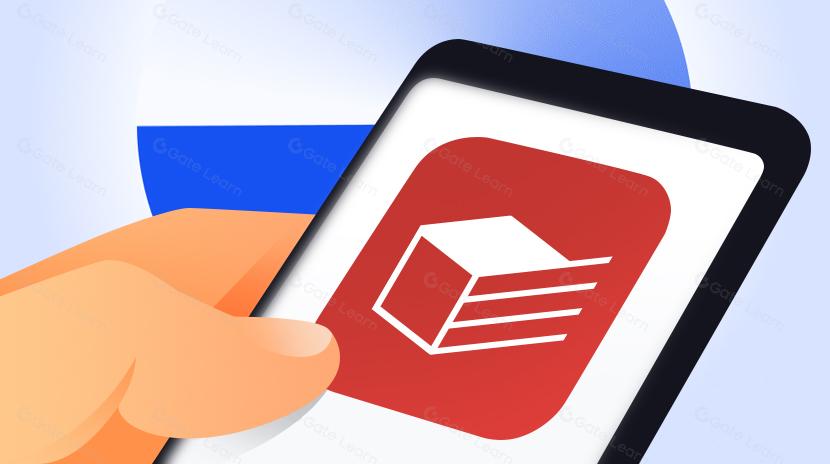
ما هو Tronscan وكيف يمكنك استخدامه في عام 2025؟
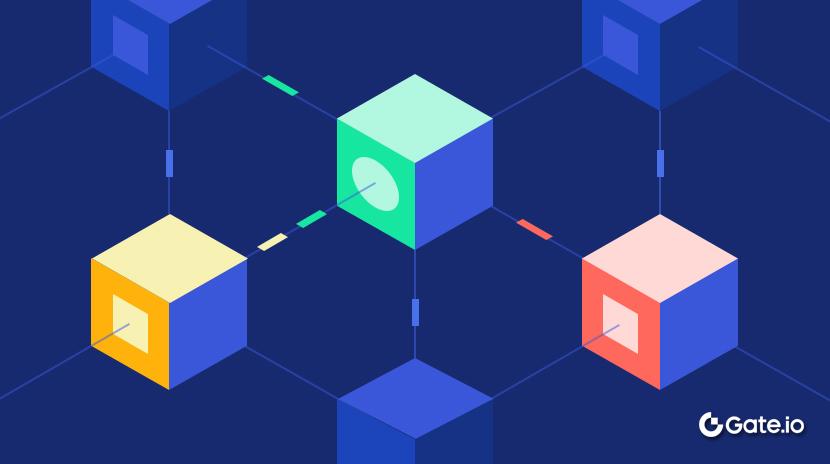
كل ما تريد معرفته عن Blockchain
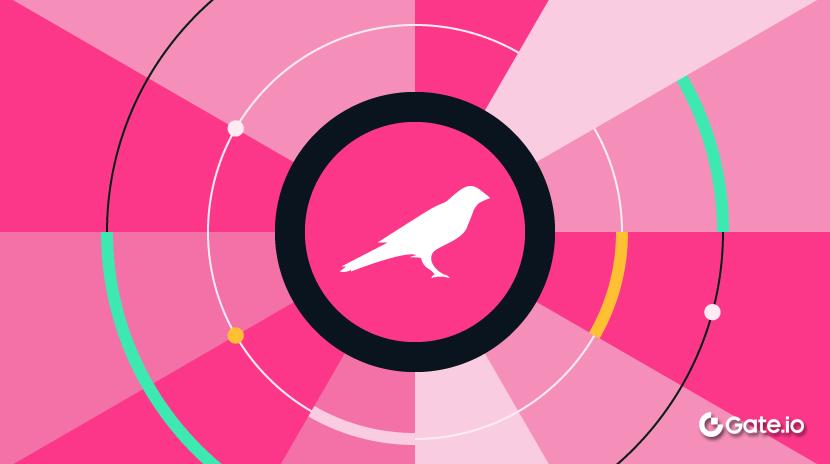
ما هي كوساما؟ كل ما تريد معرفته عن KSM

ما هو كوتي؟ كل ما تحتاج إلى معرفته عن COTI
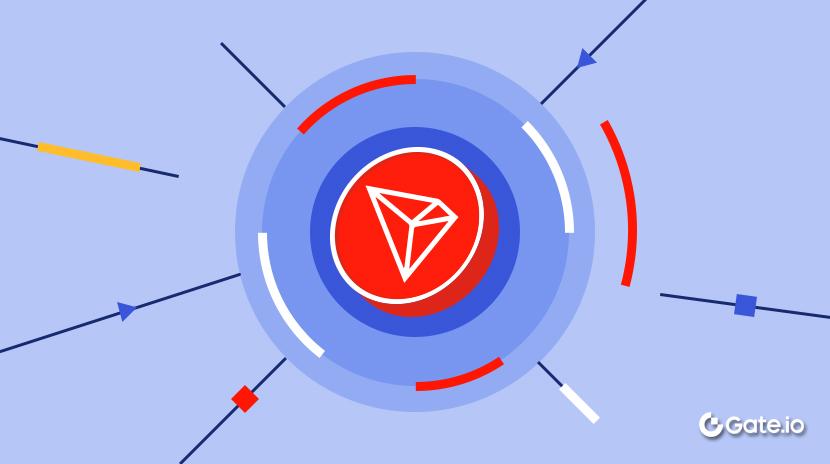
ما هي ترون؟
